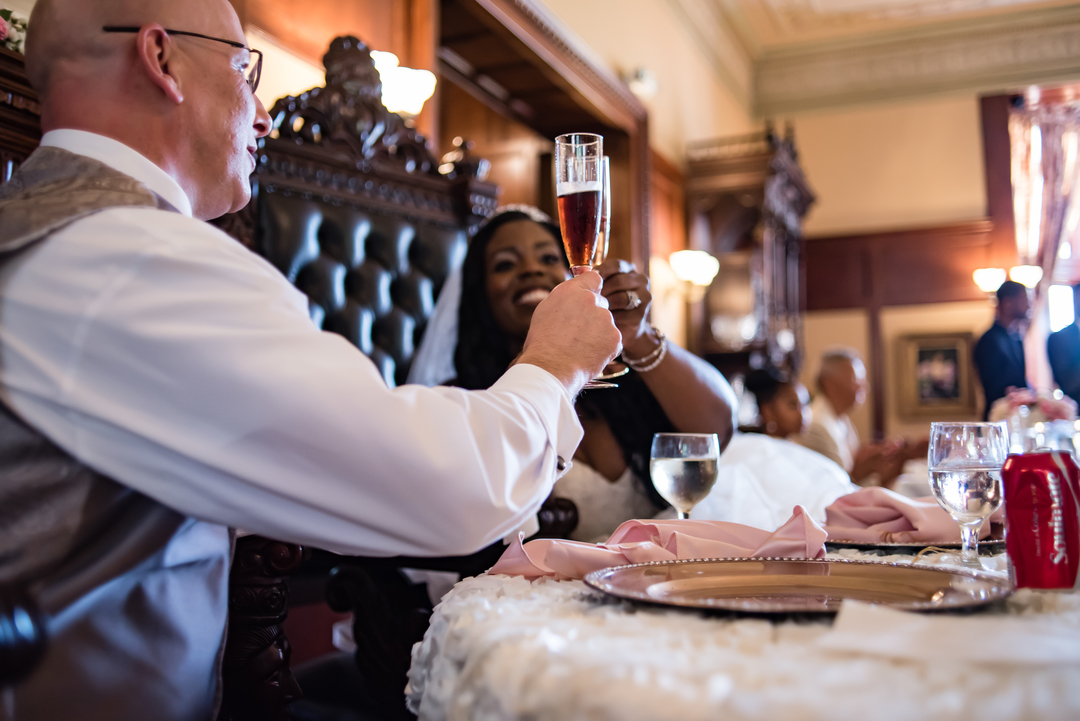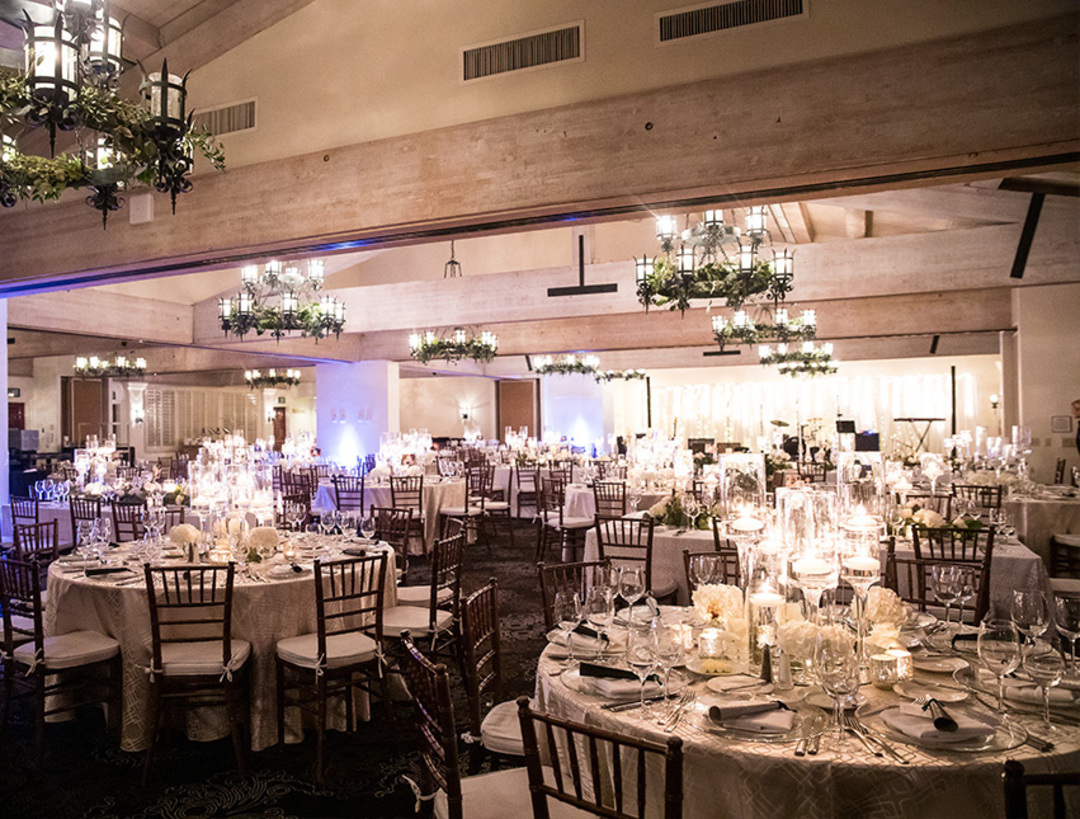- Expert advice/
- Wedding planning 101/
- Wedding planning questions/
- How to Write a Wedding RFP
- Wedding planning questions
How to Write a Wedding RFP
A wedding RFP, or request for proposal, is an easy way to outline your wants, needs, and limitations for each of your prospective wedding vendors. Here's how to write a wedding RFP that will get you what you want.
Last updated February 5, 2024

Wedding magic, like movie magic, actually requires a lot of work. From the moment wedding planning begins, it’s all about logistics and, to handle those logistics, you need vendors—a lot of them. Wedding vendors speak a specific language, though, and you want to be sure that you’re conveying your needs accurately to each on. Enter: The wedding RFP. An RFP, or request for proposal, is the key to unlocking your wedding day dreams (via the creation of vendors, of course). Here’s exactly how to create and write a wedding RFP.
What Is An RFP?
As we said, an RFP is formally referred to as a "request for proposal." It’s essentially a formal document that includes the various details of what a couple wants from a venue or vendors. An RFP can include everything from budget, dates, guest count, details of the arrangement, and much more. In its simplest form, a wedding RFP is basically a couple saying “We are getting married on this date and would love XYZ from you” to the vendor.
It’s common for couples to cast a wide net when sending out RFPs, as opposed to only sending them to their top 2-3 choices. Ideally, though, you’ve done some preliminary research and know which vendors realistically fit into your budget and style requirements.
Once a venue or vendor receives an RFP, they send back their full scope of what they can do for you based on your request—it may be exactly what you asked for or it may include some tweaks. Things move forward or stop from there.
What Vendors Can I Write An RFP For?
Basically, any vendor you want. As RFPs can be used for many occasions and events, the category of vendors in the wedding world that accept these requests include (but are not limited to):
- Event Spaces and Venues
- Caterers and Food Service
- Entertainment Services (Band, DJ, Lighting, Etc.)
- Planners and Event Coordinators
- Florists
- Photographers and Videographers
- Beauty and Hair

Benefits Of A Wedding RFP
Wedding vendor RFPs aren’t exactly light work—they should be relatively specific and detailed. They’re certainly worth it, though. Here are some of the major benefits:
- The ability to see a side-by-side comparison between each vendor to help make the best-informed decision.
- A clear guide for you and your partner to outline your wedding logistics at the beginning of the planning stages.
- Sets a precedent with your vendors/venue to avoid any unnecessary pitches, costs, or amenities.
- Saves time and energy on completing separate forms requested from each associating vendor/venue.
- It’s free.
How To Write A Wedding RFP
We can’t emphasize it enough: Be specific. Do your homework and discuss exactly what you want from each vendor with your partner. Be upfront, too. There isn’t always a lot of room for negotiation once you lay out your initial budget and desires.
Each wedding vendor RFP should be unique to that type of vendor. For example, you may send the same RFP with a few small changes to all your florist options. You’ll send another RFP to your caterer or baker, and so on. Generally, though, RFPs should have the same basic information.
What Should I Include In My Wedding RFP?
- Date: Include your chosen wedding date. If you aren’t set on exact date yet, include both your date of choice and your back-up date. (This is especially relevant for venue RFPs.)
- Type of Event: It may sound silly, but definitely state that you are hosting a wedding. RFPs are used for an assortment of events (corporate meetings, fundraisers, etc).
- Duration and Time: Specify the hours of the day, night, or both that you will likely require a vendor’s services.
- Budget: This is critical. If you don’t have a set budget for a specific vendor service, it’s important to at least offer a range—a close range (not $5K-$10K). Disclosing your budget upfront helps navigate a proposal to fit your price range and saves you and the vendor time down the line. Additionally, offering a set budget at the beginning signals to your vendor that you aren’t interested in negotiating higher.
- Guests and Space Requirements: In your RFP, specify the number of wedding guests you’re expecting—it should be at least a close estimate.
- The Details: This is where you input exactly what you’re looking for each vendor to achieve. If it’s a cake proposal, outline exactly what flavors and styles you’re hoping for. Are you looking for a massive 5-tiered naked cake with alternating red velvet and devil’s food layers? This is where you say that. The same goes for any of your other vendors. This allows vendors the ability to come back to you with an even more detailed proposal that hopefully fits your vision.
- Timeline: Your timeline is different than your date. While your date gives vendors an idea of how much lead time they have, your timeline is your desired range of dates to get and keep the ball rolling. So, this should include when proposals are due back to you, as well as other date ranges for other necessary meetings. For example, you need to set up a time to come taste your cake options for that 5-tiered beauty after all. Be transparent with your timeline of accepting proposals and bids back.
Note: In terms of your proposal due date, remember to give a little leeway. A week is a little soon, but 2-3 weeks is acceptable.

What to Avoid In A Wedding RFP
- Being Too Vague: Leaving room for different interpretations may tell the vendor/venues you’re not serious or make them unsure of what you’re looking for.
- Typos: As this is a business exchange between you and the vendors, make sure to proofread your RFP before submitting to vendors/venues.
- Asking Obvious Questions: Do your research when writing and submitting RFPs. If an answer is easily accessible online it might not be best to include in the RFP.
- Not Structuring Your RFP: Just like any business document, an RFP should naturally flow. Do not confuse potential vendors by having a disorganized RFP that requires multiple read-throughs.
Overall, the benefits of successfully filling out a edding RFP can help guide you, your partne, and your vendors to the wedding of your dreams.
- Expert advice/
- Wedding planning 101/
- Wedding planning questions/
- How to Write a Wedding RFP
Find even more wedding ideas, inspo, tips, and tricks
We’ve got wedding planning advice on everything from save the dates to wedding cakes.
